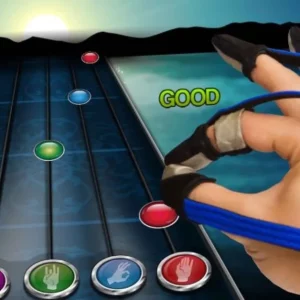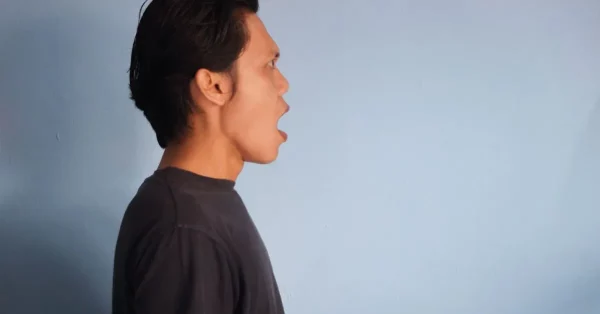When someone can’t talk after stroke, they may have sustained a severe language impairment due to the aftermath of the stroke. The inability to speak requires special treatment techniques in speech therapy, but the good news is that there’s still hope for recovery.
Some types of speech therapy are only effective if you have some preexisting speech abilities, but there are rehabilitation methods for individuals that can’t talk after stroke. Before we dig in, it’s important to understand the cause of severe speech difficulties after stroke.
What Causes Severe Speech Difficulties After Stroke?
A stroke occurs when the supply of oxygen-rich blood in the brain has been compromised. When brain cells are deprived of oxygen, they begin to sustain damage and blood flow must be restored as swiftly as possible in order to preserve brain tissue. This is why swift stroke treatment is essential to both save a life and reduce potential disability.
Speech difficulties are most common after a stroke in the left hemisphere of the brain, where the language centers of the brain reside. When a survivor can’t talk after stroke, it could be caused by intensive damage to particular language centers of the brain.
Speech is a complex task that involves a multitude of skills such as sentence production, word retrieval, and much more. Different areas of the brain contribute to these various speech-related skills.
Therefore, depending on which areas of the brain were affected by stroke, different types of speech difficulties may occur, including the inability to talk. There are ways to rehabilitate this effect, but first it’s important to understand the various types of speech problems that may occur after stroke as there could be co-occurring effects.
Possible Disorders When Survivors Can’t Talk After Stroke
For an accurate and appropriate diagnosis of speech disorders after stroke, be sure to work with a speech expert called a Speech-Language Pathologist, or speech therapist.
A speech therapist can help survivors that can’t talk after stroke by assessing cognitive communication skills, motor speech skills, and other areas involved with communication. They may diagnose the survivor with aphasia, dysarthria, or speech apraxia.
- Aphasia: a language disorder that affects your ability to communicate, including both written and oral speech skills. This can result in difficulty speaking, reading, writing, comprehending, and more.
- Dysarthria: a motor speech disorder that causes difficulty controlling the muscles used for speech. This can result in speech that is consistently slurred or slow.
- Apraxia of speech: a motor speech disorder that causes difficulty coordinating the oral muscles to form words. This can result in inconsistent and unpredictable errors in speech.
The symptoms of dysarthria and apraxia of speech are similar, but the key differentiator is that speech errors are consistent with dysarthria and inconsistent with apraxia of speech.
How Aphasia Affects Speech After Stroke
Aphasia is the umbrella term for speech disorders that affect speech and comprehension. There are many different types of aphasia, and it’s essential for a speech therapist to help diagnose any conditions that are present.
For example, expressive aphasia involves difficulty producing speech while comprehension of speech remains intact. A person with expressive aphasia can understand what you are saying but they struggle to form the words to communicate. On the other hand, fluent aphasia involves difficulty comprehending speech with normal ability to produce speech. A person with fluent aphasia often strings words together in an incomprehensible way, but they can say these words without issue.
When a survivor can’t talk after stroke, they have likely sustained severe expressive aphasia. Often, these individuals can hear and comprehend what you are saying just fine, but they lack the ability to produce speech and communicate back.
However, expressive aphasia doesn’t apply to every person that can’t talk after stroke. For example, a survivor could have the ability to produce speech but if their comprehension skills have been severely affected, they may not speak because they cannot understand what you are saying.
This why it’s essential to work with a Speech-Language Pathologist to get a formal diagnosis. From there, rehabilitation can begin.
Rewiring the Brain for Survivors that Can’t Talk After Stroke
To improve speech after stroke, you need to retrain your brain to control those skills associated with speech. For example, if someone can’t talk after stroke, they can retrain their brain to execute the skill of speech production. This is an intensive process, but it is often possible with rigorous, consistent therapy.
Speech therapy works by harnessing the power of neuroplasticity, or your brain’s ability to create new neural pathways and strengthen existing ones. When speech has been affected by stroke, neuroplasticity allows the brain to create and strengthen new pathways that contribute to speech.
Neuroplasticity is activated by “massed practice,” or high repetition of a task. The more you practice a specific skill, the stronger those pathways become. This is where the saying “practice makes perfect” comes from, or “use it to improve it.” The same concept applies to speech recovery after stroke.
To regain the ability to produce speech after stroke, you need to practice speech therapy exercises on a consistent basis. For example, if a person has expressive aphasia, they can practice speaking by repeating single words at a time. The repetition of saying a single word will help rewire the brain and improve the ability to say that word. Even imagining saying a word is helpful (mental practice).
With enough time and practice, one can improve speech production skills overall. However, individuals with severe expressive aphasia may not be able to talk at all, making these speech exercises frustrating. Fortunately, there’s another technique that can help called melodic intonation therapy, or singing therapy.
Singing Therapy for Patients That Can’t Talk After Stroke
Singing therapy is a promising treatment for individuals that can’t talk after stroke. It’s well-studied and well-understood that stroke patients with severely limited speech are better at singing their words than saying them.
The explanation for this phenomenon lies in the differences between the left and right hemispheres of the brain. The right hemisphere of the brain contributes to creative skills such as music and rhythm while the left hemisphere of the brain contributes to logical skills including speech. When a stroke impacts the left hemisphere of the brain, it can cause difficulties producing speech, but the ability to sing often remains because it’s a creative skill that involves rhythm and music.
To see how this works, watch this video:
Singing is not easy for individuals that can’t talk after stroke. However, it’s possible; and that alone is enough to provide hope for recovery.
An experienced speech therapist can help survivors sing short phrases and eventually work up to saying those phrases. Over time, this is how individuals can eventually regain some speech even if they can’t talk immediately after stroke.
Continuing Recovery at Home with Speech Therapy Apps
Working with a Speech-Language Pathologist is essential for stroke patients recovering severe speech impairments. Singing therapy is a complex endeavor, and one-on-one rehabilitation with a skilled therapist is vital for the best results.
Once you recover some speech abilities, you can begin to take some matters into your own hands by practicing speech therapy exercises at home. There are mobile apps that you can use like the CT Speech and Cognitive Therapy App, which was created by two speech therapists to help provide access to effective speech therapy right at home.
A home therapy program for speech is a great way to keep the brain stimulated between outpatient therapy sessions. Continue to work with your speech therapist in the clinic and keep practicing speech therapy exercises at home for the best results.
Regaining the Ability to Talk After Stroke
Overall, there is hope for speech recovery after stroke no matter how severe your language difficulties are. Even survivors that can’t talk after stroke can often improve their speech by starting with singing therapy and slowly working their way up to include speech therapy exercises too.
We hope this article helped you understand why some survivors can’t talk after stroke and how language skills can slowly improve over time with the right therapy.










